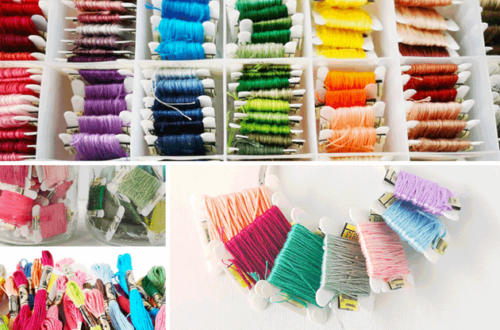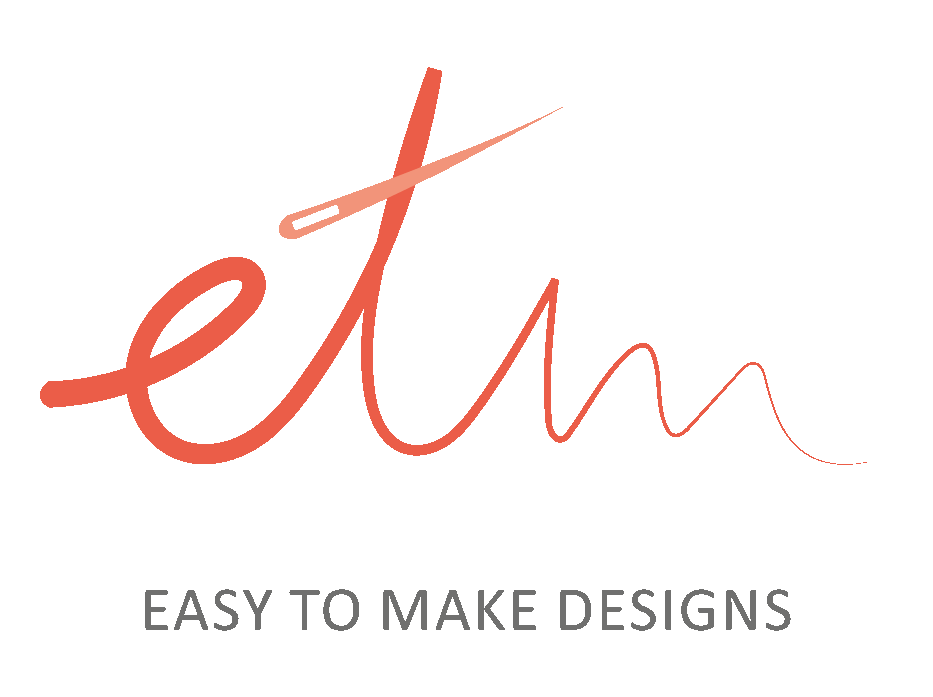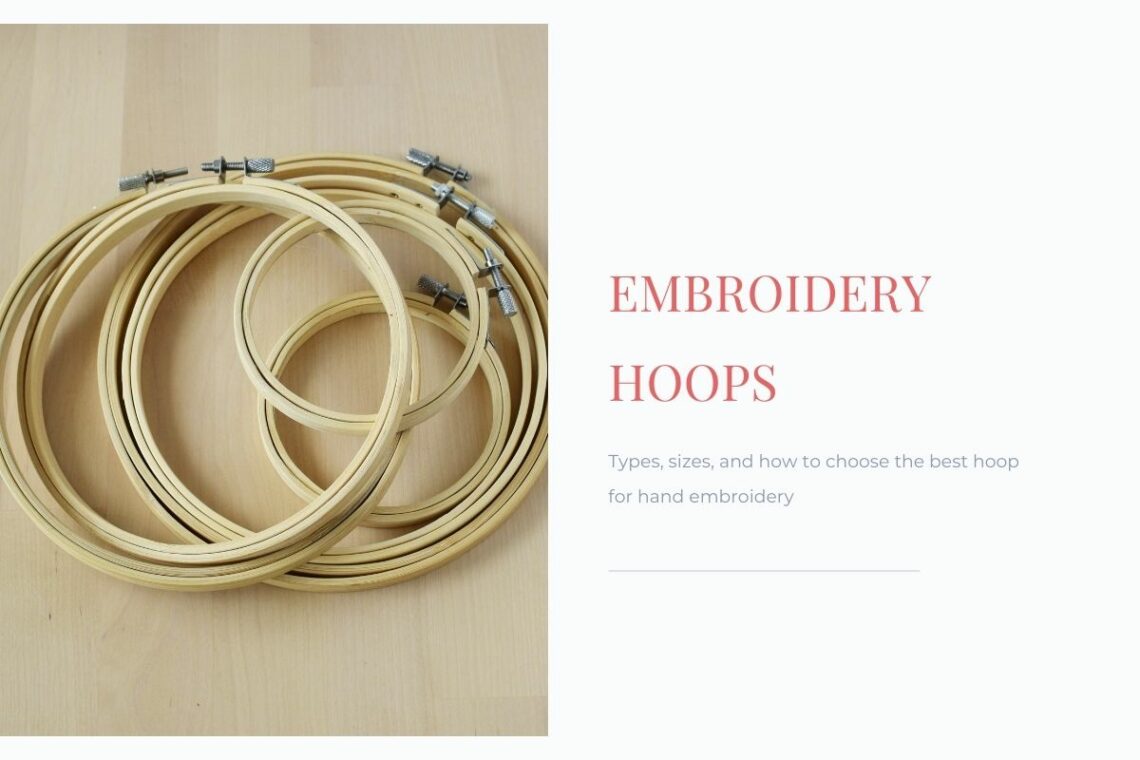
Embroidery hoops. Types, sizes, and how to choose the best hoop for hand embroidery
An embroidery hoop is one of the main items on the embroidery supplies list. You may change the fabric and the threads from project to project. Of course, you will also change up the needles as you go. But the embroidery hoop, if chosen right, will stay, and you will use it again and again.
From Wikipedia: “An embroidery hoop, earlier called tambour frame, consists of a pair of concentric circular or elliptical rings. The larger ring has a tightening device. The artisan repositions the hoop as needed when working over a large piece of fabric. Embroidery hoops come in various sizes and are generally small enough to control with one hand and rest in the lap.”
Historically, embroidery hoops were made from wood, bone, metal, or ivory. Modern embroidery hoops have better tension regulation mechanisms. Also, the materials have changed a lot. This blog article will review contemporary embroidery hoops by type, size, and material. Also, it will give you some tips on how to choose an embroidery hoop that will serve you for years.
Why do we use embroidery hoops?
And do we really need to use one? Yes and no. It depends on the embroidery project you are planning. Some embroidery techniques like sashiko or boro embroidery do not require the use of an embroidery hoop. Other techniques, like cross-stitch, can be made both with a hoop and without one.
Modern surface embroidery, instead, requires the use of embroidery hoops. And the hoop you use has to be of good quality to guarantee equal and constant tension of the fabric when you work on your project. In addition, having your material held taut in an embroidery hoop will help you make neater stitches when you are doing hand embroidery. It can also prevent puckering in the spaces between stitches.
Remember that an embroidery hoop is not the only way to keep your fabric taut. There are alternatives like Q-snaps that are very popular among cross-stitches. Also, you can use slate frames, scroll frames, or stretcher bar frames instead of embroidery hoops.
So, now that we know that embroidery hoops are made to keep the fabric taut while we embroider, let’s see what can we choose from.
Types of embroidery hoops
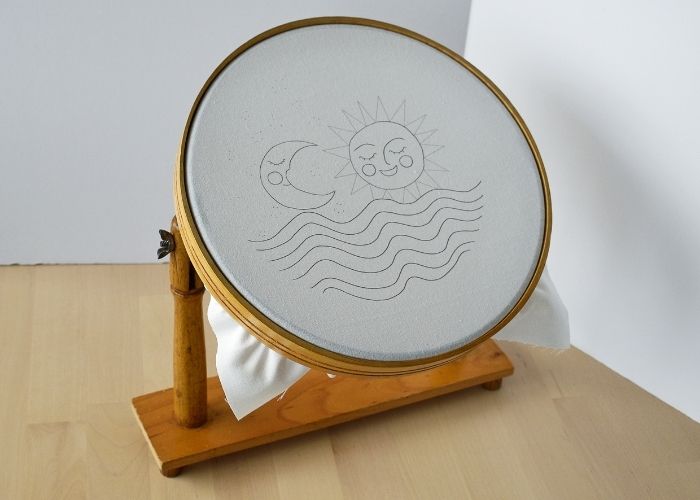
We can group embroidery hoops by:
- Type of tension – screw tension, spring tension, or Flexi.
- Material – plastic, wood, or metal hoops.
- Size – mini, small, medium, or large in diameter.
- Depth of the hoop
Embroidery hoops with screw tension
I guess it is the most standard embroidery hoop where the tension of the fabric is created by placing the piece of the material between two rings. A screw on the outer ring lets you increase and decrease tension on the hoop. Screw tension hoops come in various materials, sizes, and shapes and are widely available.
When choosing a hoop with a screw tension, pay attention to the hardware. The screw must have outer ridges that serve as grips for tightening with the fingers. Also, a good tension screw has a slash in it for a screwdriver so that you can really tighten the thing up. Best if the hardware is all brass. The brass brackets are solid and durable, and they don’t bend, no matter how much you tighten the screw.
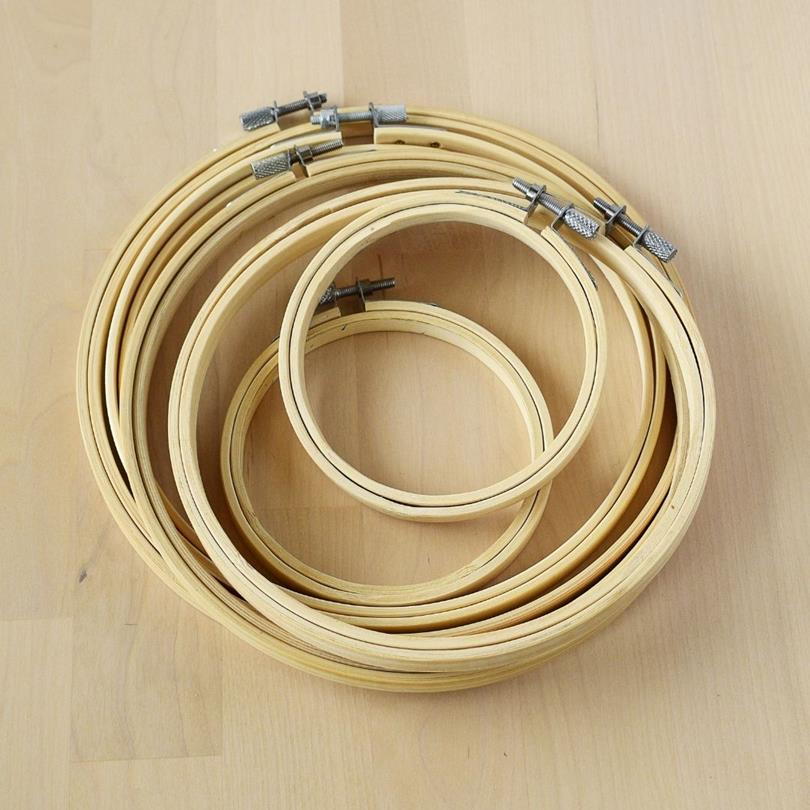
Spring tension embroidery hoops
With these hoops, tension is created by an inner metal ring that slots into a grove in the plastic or metal outer ring. These hoops are often used for machine embroidery. Spring tension hoops can also be used for hand embroidery and cross-stitch. Minor flaws of spring tension hoops – the handles are bulky and can get in the way; also, you can not adjust the tension of the fabric.
Flexi hoops
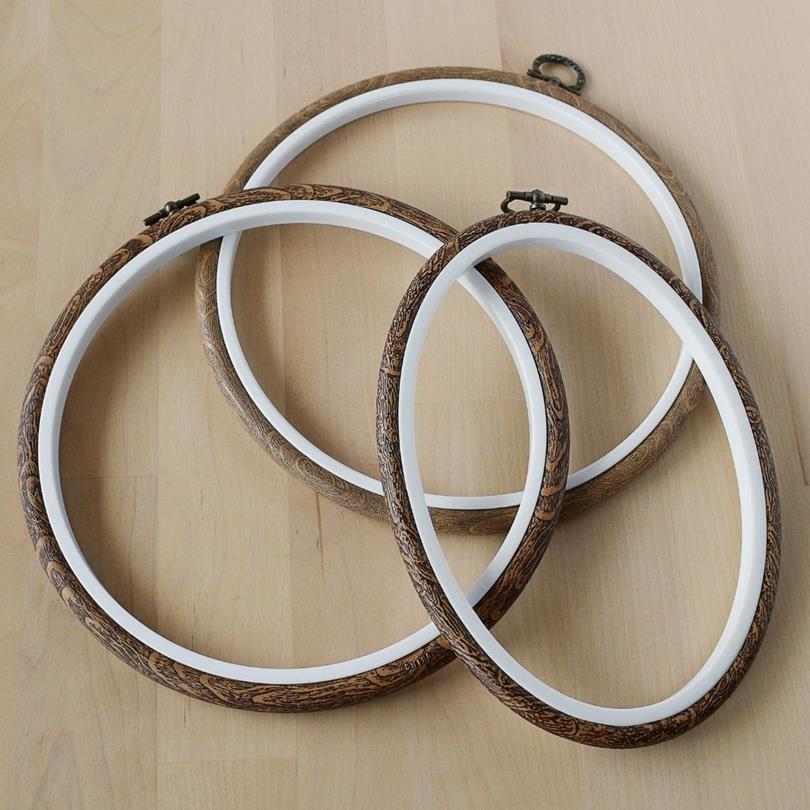
These embroidery hoops are made from a rigid inner plastic hoop and a flexible outer hoop. They are pleasant to work with and keep the tension rather well, but you can not adjust it. It may be a problem if you embroider on a bulkier fabric or on a piece of very thin material.
Flexi hoops come in different sizes and shapes. You will find round, oval, and even square with rounded edges Flexi hoops in many sizes
Plastic embroidery hoops
This is the most affordable option on the market. Some plastic hoops have molded edges that help keep fabric extra tight, but they can also damage it. Some plastic hoops are more rigid, and some are too flexible to hold their shape well. If you want to choose a plastic hoop, opt for higher quality, more rigid hoops. But basically, I don’t recommend a plastic hoop like your main working hoop. It can be an excellent alternative to frame your finished work in a colorful plastic hoop.
Plastic hoops come in round, oval, and even square shapes and in many different sizes.

Metal embroidery hoops
These hoops are relatively rare nowadays, but there are a lot of vintage metal embroidery hoops on the market. Metal embroidery hoops come with a spring or screw tension regulation mechanism.
Wooden embroidery hoops
The most popular embroidery hoops are made from wood. An excellent wooden hoop has these qualities:
- It is made from quality wood (usually birchwood) and is solid and robust.
- You can not bend it easily.
- The outer ring fits the inner ring very well.
- The hoop has a natural finish and is smoothly polished.
- There are no splinters that can snag your threads or hurt your fingers.
- It has solid and durable all-brass hardware for tension regulation with a screw.
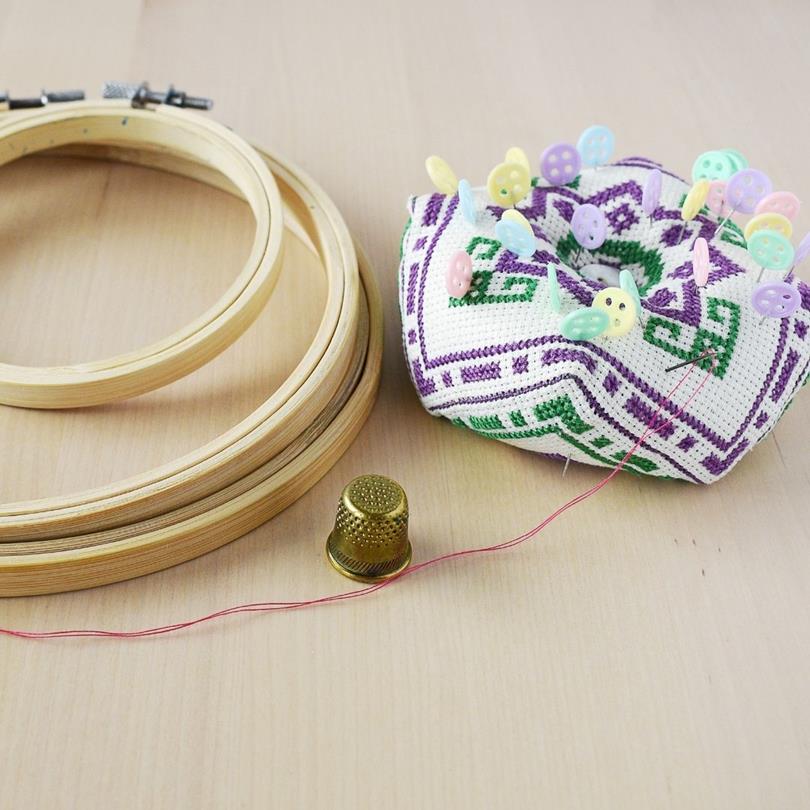
What about bamboo hoops? Bamboo embroidery hoops are a cheap alternative to birchwood hoops. However, they are not so solid and tend to bend. Also, some bamboo hoops are not polished well enough and have splinters. But the worst thing about bamboo hoops is that they tend to lose the tension of the fabric while working. I’ve noticed that the rings of the bamboo hoops do not fit so well and can leave some gaps when you tighten them up.
Despite all the above, I still use bamboo hoops, not for embroidering but for framing finished embroideries. These hoops are cheap, come in many sizes, and can be easily stained or colored with acrylic paint to create an ideal frame for your hoop art.
Sizes of the embroidery hoops
Modern hand embroidery hoops come in all shapes and sizes. From mini hoops (1-2 inches) to the biggest hoops of 12 inches. The smallest mini hoops are great for making keyrings or pendants with embroideries. The biggest ones – are great as the frames to display your embroidery work.
The medium-sized hoops 15- 18 cm (6-7 inches) are the most comfortable to stitch in. So, if you want to have one perfect embroidery hoop for stitching, go for high quality, wooden embroidery hoop of medium size.
Depth of embroidery hoops
Embroidery hoops come in different depth – from 1 cm to 2,5 cm (0,4 – 1 inch) deep. Usually, cheaper bamboo hoops are 1 cm deep, good quality wooden hoops are 1,25-1,75 cm (0,5 – 0,7 inches) deep and big quilting hoops are up to 2,5 cm (1 inch) deep.
Typically, a 1,5 cm (⅝ inch) hoop is an excellent option for most embroidery fabrics. However, heavier fabrics like wool or heavy linen may require deeper hoops.
Remember that quilting hoops are not the best choice for hand embroidery as they have slightly rounded edges of the inner hoop. It allows it to accommodate the thick layers of a quilt. Instead, an embroidery hoop has straight edges to grip a single layer of fabric.
How to hold the hoop while working
We embroider with one hand and keep the hoop in another one. If you want to work faster, consider trying a hoop stand. It holds the hoop for you and allows you to use both hands for stitching.
Some options for the hoop stand:
- Lap stand
- Tabletop stand
- Floor stand
- Mounted on the table with a clasp stand
I use a lap stand, and I’m delighted with it as it allows me to embroider on the sofa in front of the TV.
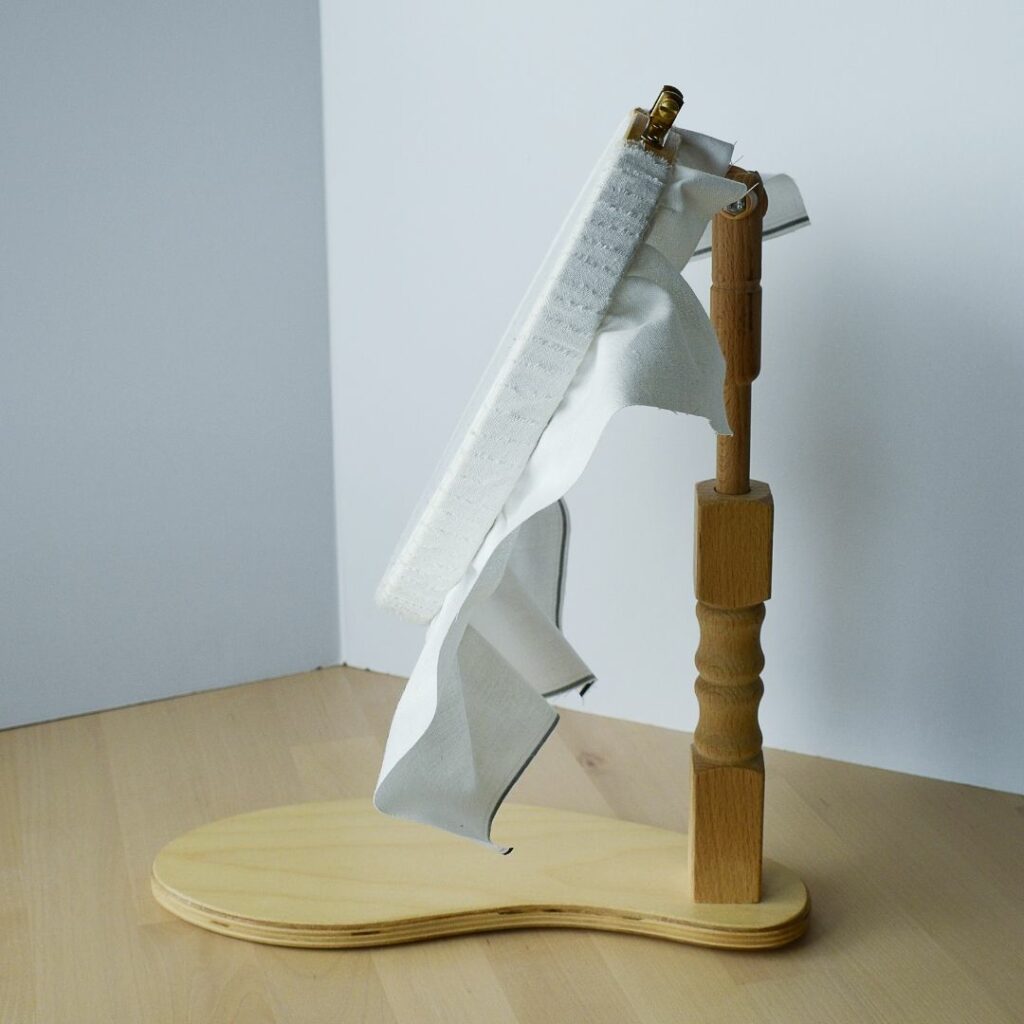
Some additional tips
Do not leave your embroidery in a hoop when you are not stitching. Keeping the tension for a long time can create creases that are hard to get out. Some more delicate fabrics can even get damaged because of the prolonged tension in the hoop. Instead, stretch the material in a hoop just before starting to stitch and take it out after you finish your stitching for a day.
If the fabric loosens while stitching, wrap your inner hoop with cotton twill tape. This will create extra friction, hold the material better, and protect your ground fabric. In addition, when working with thin, slippery fabrics or more significant pieces, wrapping an inner hoop will minimize creases in your material and crushed stitches.
It is best if your embroidery hoop is 2 – 4 cm (1-1.5 inches) bigger than your design. This will allow you to embroider the whole design without recentering it. If your design is significantly bigger, go for a 15 – 18 cm (6-7 inches) hoop and recenter the work as you embroider. However, a much bigger hoop can be too big to hold, and your hands will get tired of controlling it. If your design is oversized and you do not want to recenter it in a hoop, look for alternatives like slate frames.
What’s next?
Learn more about hand embroidery tools and materials by reading these articles:
- Hand embroidery needles and all you need to know to choose the right one
- Embroidery floss and threads. An in-depth guide to hand embroidery threads, floss, and other types of yarn you can use to embroider
- A guide to embroidery fabrics. What is the best fabric for hand embroidery, and why
Learn basic hand embroidery stitches with a hand embroidery online course – “The top 10 hand embroidery stitches to learn“. This course is totally free and teaches the basic stitches. Besides that, a free pdf embroidery pattern download is included in the class.


You May Also Like
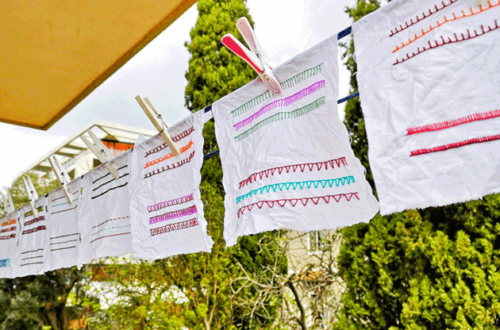
How to wash hand embroidery
10 February 2021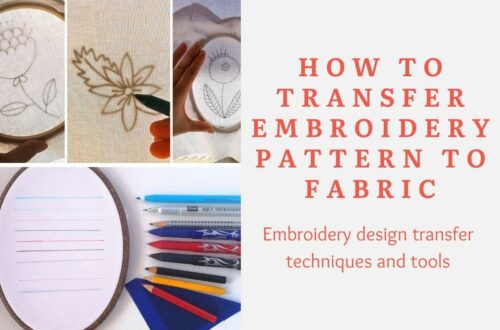
How to transfer embroidery pattern to fabric. Embroidery design transfer techniques and tools
14 September 2020